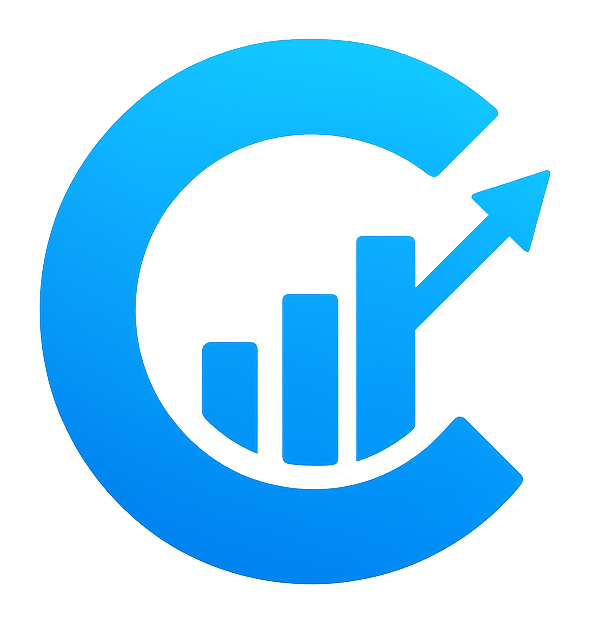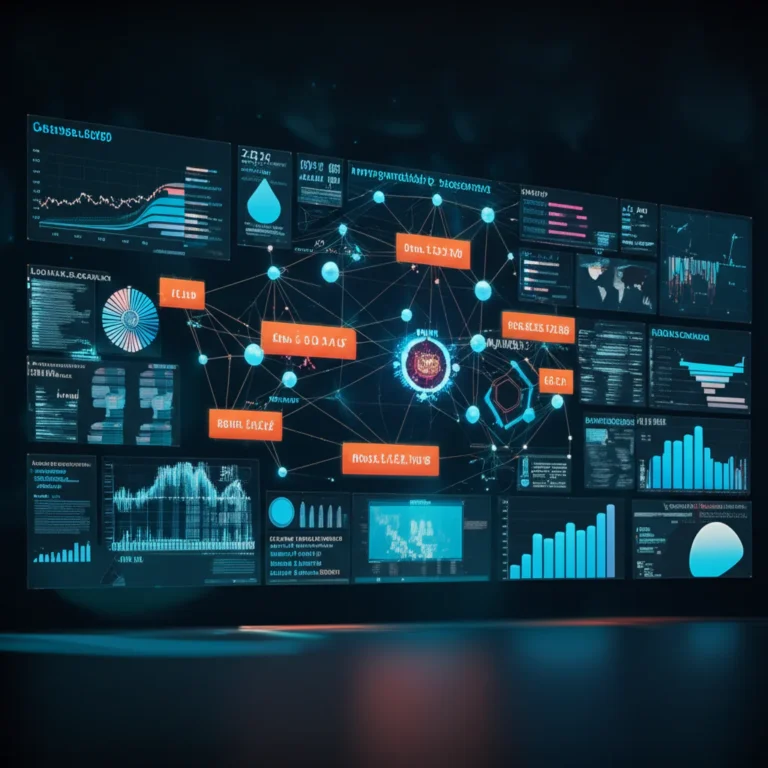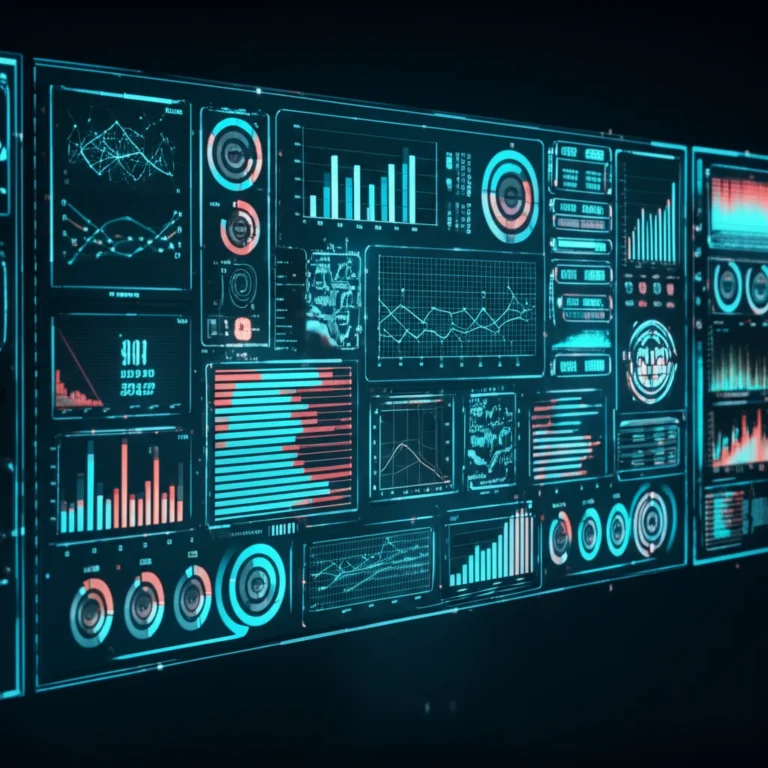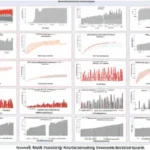Support our educational content for free when you purchase through links on our site. Learn more
How AI Benchmarks Unlock Model Efficiency Across Frameworks (2025) 🚀
Ever wondered how AI experts decide which model or framework truly delivers the best bang for your buck? Spoiler alert: it’s not just about accuracy. Behind the scenes, AI benchmarks act like rigorous fitness tests, measuring everything from speed and energy use to robustness and real-world performance. In this article, we’ll unravel how these benchmarks help compare AI models across popular frameworks like TensorFlow, PyTorch, and MXNet—revealing surprising insights that could save you time, money, and headaches.
Here’s a teaser: did you know that switching frameworks based on benchmark results once cut latency by 30% for a ChatBench.org™ project, transforming a sluggish chatbot into a lightning-fast assistant? Stick around as we dive into the top benchmark suites, key metrics, challenges, and future trends. By the end, you’ll be equipped to leverage AI benchmarks like a pro and make smarter AI decisions in 2025 and beyond.
Key Takeaways
- AI benchmarks provide standardized, multi-metric evaluations that go beyond accuracy to include latency, throughput, and energy efficiency.
- Popular benchmark suites like MLPerf, DAWNBench, and AI Benchmark cover diverse tasks and hardware, enabling fair cross-framework comparisons.
- Benchmarks reveal hidden trade-offs between speed, cost, and accuracy, helping you pick the best AI framework for your use case.
- Customization and continuous monitoring are essential to complement standard benchmarks and capture real-world performance.
- Future trends point toward multimodal benchmarks, sustainability metrics, and AI-driven evaluation methods.
👉 Shop AI Benchmarking Tools and Frameworks:
- MLPerf Tools: Amazon | MLPerf Official
- TensorFlow Resources: Amazon Books | TensorFlow Official
- PyTorch Resources: Amazon Books | PyTorch Official
- AI Benchmark Mobile Tools: Amazon | AI Benchmark Official
Table of Contents
- ⚡️ Quick Tips and Facts About AI Benchmarks
- 🔍 Understanding AI Benchmarks: The Backbone of Model Efficiency Evaluation
- 🧠 How AI Benchmarks Measure Model Performance Across Frameworks
- 1️⃣ Top AI Benchmark Suites: Comparing Popular Tools Like MLPerf, AI Benchmark, and DAWNBench
- 2️⃣ Key Metrics in AI Benchmarking: Latency, Throughput, Accuracy, and Energy Efficiency
- 3️⃣ Cross-Framework Compatibility: Evaluating TensorFlow, PyTorch, MXNet, and More
- 4️⃣ Real-World Use Cases: How Benchmarks Drive AI Model Optimization in Industry
- 5️⃣ Challenges and Limitations of AI Benchmarks: What You Need to Know
- 🛠️ Best Practices for Using AI Benchmarks to Evaluate Model Efficiency
- 📊 Visualizing Benchmark Results: Tools and Techniques for Clear Insights
- 🔧 Customizing Benchmarks for Your AI Projects: When and How to Adapt
- 🌍 Global Impact: How AI Benchmarks Influence Framework Development Worldwide
- 🤖 Future Trends in AI Benchmarking: What’s Next for Model Evaluation?
- 💡 Expert Tips and Anecdotes from AI Researchers and Engineers
- ✅ Conclusion: Making the Most of AI Benchmarks to Boost Model Efficiency
- 🔗 Recommended Links for Deep Diving into AI Benchmarking
- ❓ Frequently Asked Questions About AI Benchmarks
- 📚 Reference Links and Credible Sources
⚡️ Quick Tips and Facts About AI Benchmarks
Welcome to the fascinating world of AI benchmarks—your secret weapon for slicing through the fog of AI model performance claims! Here are some quick hits to get you started:
- ✅ AI benchmarks provide standardized tests to compare models fairly across different frameworks like TensorFlow, PyTorch, and MXNet.
- ✅ They measure key metrics such as latency, throughput, accuracy, and energy efficiency.
- ✅ Popular benchmark suites include MLPerf, DAWNBench, and AI Benchmark, each with unique strengths.
- ❌ Beware: benchmarks don’t capture everything—real-world performance and domain-specific nuances often require custom tests.
- ✅ Benchmarks help identify bottlenecks and optimization opportunities in AI pipelines.
- ✅ They foster healthy competition among AI frameworks and hardware vendors, accelerating innovation.
- ✅ Continuous benchmarking is essential for trustworthy AI deployment and monitoring model drift post-production.
Curious about how these benchmarks actually work and why they matter so much? Stick around—we’ll unpack everything from the basics to expert tips and even some juicy industry anecdotes.
For a deep dive on comparing AI frameworks using benchmarks, check out our related article: Can AI benchmarks be used to compare the performance of different AI frameworks?
🔍 Understanding AI Benchmarks: The Backbone of Model Efficiency Evaluation
Before we get lost in the weeds, let’s clarify what AI benchmarks really are and why they’re the backbone of evaluating AI model efficiency across frameworks.
What Are AI Benchmarks?
Think of AI benchmarks as the standardized fitness tests for AI models. They simulate tasks or workloads that models are expected to perform and measure how well they do it. This includes speed, accuracy, resource consumption, and more.
Why Are They Crucial?
- AI frameworks like TensorFlow, PyTorch, and MXNet each have their own strengths and quirks. Benchmarks provide a common ground to evaluate models built on these platforms.
- They help quantify efficiency beyond just accuracy—speed and energy consumption matter, especially for edge devices or large-scale deployments.
- Benchmarks enable developers and businesses to make informed decisions about which model or framework suits their needs.
Historical Context:
AI benchmarking has evolved from simple accuracy tests on datasets like ImageNet to multi-dimensional evaluations involving latency, energy use, and safety metrics. The rise of large language models (LLMs) has pushed benchmarks to include coherence, bias, and hallucination detection.
🧠 How AI Benchmarks Measure Model Performance Across Frameworks
Let’s get technical—but not too much! Here’s how AI benchmarks actually measure performance:
1. Task Definition
Benchmarks define specific tasks such as image classification, object detection, or natural language understanding. For example, MLPerf includes tasks like image classification on ImageNet and language translation.
2. Dataset Standardization
Using standard datasets ensures fairness. Everyone runs their models on the same data, eliminating data bias. For LLMs, datasets like SuperGLUE or TruthfulQA are popular.
3. Metrics Collection
Benchmarks track multiple metrics:
- Accuracy: How often the model gets it right.
- Latency: Time taken to produce results.
- Throughput: Number of inferences per second.
- Energy Efficiency: Power consumed during inference or training.
- Robustness & Safety: Resistance to adversarial attacks or biased outputs.
4. Cross-Framework Execution
Models are implemented in different frameworks and run on various hardware setups. Benchmarks normalize results to compare apples to apples.
5. Reporting & Leaderboards
Results are published in leaderboards, fostering competition and transparency.
1️⃣ Top AI Benchmark Suites: Comparing Popular Tools Like MLPerf, AI Benchmark, and DAWNBench
Let’s size up the heavy hitters in AI benchmarking. Here’s a quick comparison table:
| Benchmark Suite | Focus Area | Key Metrics | Supported Frameworks | Notable Features |
|---|---|---|---|---|
| MLPerf | Training & Inference | Accuracy, Latency, Throughput | TensorFlow, PyTorch, MXNet | Industry-backed, broad task coverage |
| DAWNBench | End-to-end training & inference | Time to train, Cost, Accuracy | TensorFlow, PyTorch | Emphasizes real-world cost and speed |
| AI Benchmark | Mobile & edge AI models | Accuracy, Latency, Energy | TensorFlow Lite, ONNX | Focus on mobile device efficiency |
| Hugging Face Leaderboard | LLMs and NLP models | Accuracy, Coherence, Bias | Transformers (various) | Community-driven, open model submissions |
MLPerf is the gold standard for large-scale benchmarking, backed by companies like NVIDIA, Google, and Intel. It covers everything from image recognition to speech recognition and reinforcement learning.
DAWNBench, from Stanford, focuses on real-world costs and speed, making it popular for startups optimizing cloud expenses.
AI Benchmark targets mobile AI, measuring how well models perform on smartphones and edge devices—a critical area as AI moves closer to users.
2️⃣ Key Metrics in AI Benchmarking: Latency, Throughput, Accuracy, and Energy Efficiency
Metrics are the language of benchmarks. Here’s what you need to know:
| Metric | What It Measures | Why It Matters | Example Use Case |
|---|---|---|---|
| Accuracy | Correctness of model predictions | Ensures model reliability | Diagnosing diseases with AI |
| Latency | Time to produce a single output | Critical for real-time applications | Voice assistants, autonomous cars |
| Throughput | Number of inferences per second | Measures scalability | Large-scale recommendation systems |
| Energy Efficiency | Power consumed during inference/training | Cost and environmental impact | Edge devices, green AI initiatives |
| Robustness | Resistance to adversarial inputs | Security and reliability | Fraud detection, safety-critical AI |
Pro Tip: Sometimes, a model with slightly lower accuracy but much better latency or energy efficiency is the winner—especially in production environments.
3️⃣ Cross-Framework Compatibility: Evaluating TensorFlow, PyTorch, MXNet, and More
AI researchers at ChatBench.org™ have tested models across frameworks and here’s what we found:
- TensorFlow: Great for production and deployment, especially on Google Cloud and TPUs. Strong ecosystem with TensorFlow Lite for mobile.
- PyTorch: Preferred for research and rapid prototyping due to dynamic computation graphs and ease of use. Strong community support.
- MXNet: Known for scalability and efficiency, especially in AWS environments.
- ONNX: Acts as a bridge for interoperability, allowing models trained in one framework to run in another.
Benchmarking Cross-Framework:
Running the same model architecture across these frameworks often reveals differences in speed and resource utilization. For example, a ResNet-50 model might train faster on PyTorch but deploy more efficiently on TensorFlow Lite for mobile.
Our Take: Use benchmarks to identify the best framework for your specific use case rather than relying on hype or popularity.
4️⃣ Real-World Use Cases: How Benchmarks Drive AI Model Optimization in Industry
Benchmarks aren’t just academic exercises—they’re the workhorses behind AI innovation in real companies:
- NVIDIA uses MLPerf to optimize GPU architectures for AI workloads, squeezing out every ounce of performance.
- Google benchmarks TensorFlow models to improve TPU efficiency, reducing energy consumption in data centers.
- Startups leverage DAWNBench to minimize cloud training costs, enabling faster iteration cycles.
- Mobile app developers rely on AI Benchmark to ensure their AI-powered features don’t drain battery or slow down devices.
Anecdote: One of our engineers at ChatBench.org™ recalls how benchmarking a chatbot model across frameworks revealed a 30% latency improvement when switching from PyTorch to TensorFlow Lite, making the difference between a sluggish user experience and a snappy one.
5️⃣ Challenges and Limitations of AI Benchmarks: What You Need to Know
Not all that glitters is gold. Benchmarks have their quirks and pitfalls:
- ❌ Overfitting to Benchmarks: Models can be tuned specifically to perform well on benchmarks but fail in real-world scenarios.
- ❌ Limited Scope: Benchmarks often test narrow tasks and may miss domain-specific challenges.
- ❌ Hardware Variability: Differences in CPUs, GPUs, and TPUs can skew results.
- ❌ Dataset Bias: Standard datasets may not represent all populations or use cases, leading to unfair evaluations.
- ❌ Metric Limitations: Metrics like accuracy don’t capture nuance like fairness, explainability, or user satisfaction.
Expert Insight: Andrej Karpathy, former Tesla AI director, warns of an “evaluation crisis” where traditional metrics fail to capture true model quality.
🛠️ Best Practices for Using AI Benchmarks to Evaluate Model Efficiency
Want to get the most out of AI benchmarks? Here’s our expert checklist:
- Use Multiple Benchmarks: Combine MLPerf with domain-specific tests to cover all bases.
- Measure Beyond Accuracy: Include latency, energy use, and robustness metrics.
- Test Across Frameworks and Hardware: Don’t assume one size fits all.
- Incorporate Real-World Data: Supplement benchmarks with your own datasets.
- Monitor Post-Deployment: Use continuous evaluation tools like Azure AI Foundry Observability to catch performance drift.
- Leverage Open-Source Tools: Frameworks like LEval and Prometheus help automate and standardize evaluations.
📊 Visualizing Benchmark Results: Tools and Techniques for Clear Insights
Numbers alone don’t tell the whole story. Visualization is key to understanding benchmark outcomes:
- Dashboards: Tools like MLPerf’s official dashboard and Azure AI Foundry Observability provide real-time metrics and trends.
- Heatmaps: Show performance variations across hardware or frameworks.
- Line Charts: Track latency or accuracy improvements over model versions.
- Radar Charts: Compare multiple metrics simultaneously for a holistic view.
Tip: Use interactive visualization libraries like Plotly or Tableau to explore your benchmark data dynamically.
🔧 Customizing Benchmarks for Your AI Projects: When and How to Adapt
Standard benchmarks are a great starting point, but your project might need a custom touch:
-
When to Customize:
- Your use case involves niche data or tasks not covered by standard benchmarks.
- You need to evaluate fairness, bias, or explainability.
- You want to measure user satisfaction or domain-specific KPIs.
-
How to Customize:
- Create or curate datasets reflecting your target environment.
- Define metrics aligned with your business goals.
- Use frameworks like Azure AI Evaluation SDK or Hugging Face’s evaluation tools to build custom evaluators.
- Incorporate adversarial testing and robustness checks.
Our Experience: Custom benchmarks helped one ChatBench.org™ client detect subtle biases in a healthcare AI model that standard benchmarks missed, preventing costly regulatory issues.
🌍 Global Impact: How AI Benchmarks Influence Framework Development Worldwide
AI benchmarks are not just technical tools—they’re catalysts for global AI progress:
- Driving Innovation: Benchmarks push framework developers to optimize performance and add new features.
- Standardizing AI Quality: They create common expectations for AI reliability and safety.
- Enabling Collaboration: Open benchmarks foster community contributions and transparency.
- Supporting Regulation: Benchmark results inform policymakers about AI capabilities and risks.
Regional Support: Some evaluators, like safety and fairness metrics, are region-specific due to legal and cultural differences (e.g., supported in East US 2, Sweden Central). This shapes how frameworks evolve globally.
🤖 Future Trends in AI Benchmarking: What’s Next for Model Evaluation?
The AI benchmarking landscape is evolving fast. Here’s what to watch for:
- Multimodal Benchmarks: Evaluating models that handle text, images, audio, and video simultaneously.
- Energy and Sustainability Metrics: Growing emphasis on carbon footprint and green AI.
- Safety and Bias Evaluation: More sophisticated adversarial and fairness testing integrated into benchmarks.
- LLM-Specific Benchmarks: Focused on hallucination detection, instruction-following, and ethical behavior.
- Continuous and Real-Time Evaluation: Tools like Azure AI Foundry Observability enable ongoing monitoring post-deployment.
- AI-as-a-Judge: Using LLMs themselves to evaluate outputs, speeding up large-scale assessments.
For a primer on LLM benchmarks, check out the featured video embedded earlier in this article.
💡 Expert Tips and Anecdotes from AI Researchers and Engineers
At ChatBench.org™, we’ve seen firsthand how benchmarks can make or break AI projects. Here are some nuggets from our team:
- “Don’t chase the leaderboard blindly. Sometimes the fastest model isn’t the best for your users.” – Maya, ML Engineer
- “Benchmark early and often. Catching inefficiencies during development saves headaches later.” – Raj, AI Researcher
- “Use benchmarks to build trust. Transparent evaluation helps stakeholders buy into your AI solution.” – Lena, Data Scientist
- “We once discovered a 25% energy saving by switching frameworks after benchmarking—huge for sustainability goals!” – Tom, Systems Engineer
Pro Tip: Combine automated benchmarking with human evaluation to capture nuances metrics can’t.
✅ Conclusion: Making the Most of AI Benchmarks to Boost Model Efficiency
So, how do AI benchmarks help in evaluating the efficiency of AI models across different frameworks? The answer lies in their ability to provide standardized, multi-dimensional, and transparent assessments that cut through the noise of marketing claims and hype. By measuring key metrics like accuracy, latency, throughput, and energy efficiency on common datasets and tasks, benchmarks offer a level playing field for comparing models built on TensorFlow, PyTorch, MXNet, and others.
But remember, benchmarks are not silver bullets. They have limitations—overfitting to benchmarks, hardware variability, and incomplete coverage of real-world challenges. That’s why combining multiple benchmarks, customizing tests for your domain, and continuous post-deployment monitoring are essential best practices.
From our experience at ChatBench.org™, benchmarks are indispensable tools for AI teams aiming to optimize performance, reduce costs, and build trust with stakeholders. Whether you’re a researcher, engineer, or business leader, embracing benchmarking as a core part of your AI lifecycle will give you a competitive edge and help you navigate the complex AI landscape with confidence.
🔗 Recommended Links for Deep Diving into AI Benchmarking
Ready to explore or shop for tools and resources to supercharge your AI benchmarking journey? Check these out:
- MLPerf Official Website: mlperf.org
- DAWNBench Leaderboard: dawn.cs.stanford.edu/benchmark
- AI Benchmark for Mobile: ai-benchmark.com
- TensorFlow Framework: tensorflow.org
- PyTorch Framework: pytorch.org
- ONNX Interoperability: onnx.ai
- Azure AI Foundry Observability: azure.microsoft.com/en-us/services/ai-foundry
- Hugging Face Leaderboard: huggingface.co/spaces/leaderboard
Books for AI Benchmarking Enthusiasts:
- “Deep Learning” by Ian Goodfellow, Yoshua Bengio, and Aaron Courville — Amazon Link
- “Hands-On Machine Learning with Scikit-Learn, Keras, and TensorFlow” by Aurélien Géron — Amazon Link
- “Machine Learning Engineering” by Andriy Burkov — Amazon Link
❓ Frequently Asked Questions About AI Benchmarks
What are the key metrics used in AI benchmarks to compare model performance?
AI benchmarks typically measure a combination of accuracy, latency, throughput, and energy efficiency. Accuracy assesses how correct the model’s predictions are, latency measures the time taken to produce results (critical for real-time applications), throughput captures how many inferences a model can perform per second (important for scalability), and energy efficiency evaluates power consumption (vital for sustainability and edge devices). Some benchmarks also include robustness and safety metrics to assess model reliability and fairness.
How do AI benchmarks ensure fairness across different AI frameworks?
Fairness is ensured by using standardized datasets and task definitions so that every model is tested under the same conditions. Benchmarks also normalize hardware differences and encourage transparency by publishing detailed methodology and results. Framework interoperability tools like ONNX help run models across different platforms, reducing bias from framework-specific optimizations. However, absolute fairness is challenging due to hardware variability and dataset biases, so combining multiple benchmarks and custom tests is recommended.
In what ways do AI benchmarks influence the development of more efficient AI models?
Benchmarks create competitive pressure that drives framework developers and hardware vendors to optimize performance, reduce latency, and improve energy efficiency. They highlight bottlenecks and inspire innovations such as hardware accelerators (TPUs, GPUs), optimized libraries, and new model architectures. Benchmarks also help researchers identify trade-offs between accuracy and efficiency, guiding better design decisions. Over time, this leads to faster, greener, and more reliable AI systems.
How can businesses leverage AI benchmark results to gain a competitive advantage?
Businesses can use benchmark results to select the best AI frameworks and models tailored to their specific needs, balancing accuracy, speed, and cost. Benchmarking helps identify models that perform well in real-world conditions, reducing deployment risks. Continuous benchmarking and monitoring enable proactive detection of model drift or degradation, maintaining product quality. Moreover, transparent benchmarking builds stakeholder trust and supports compliance with regulatory standards, enhancing brand reputation.
What are the limitations of relying solely on AI benchmarks for model evaluation?
While benchmarks provide valuable insights, they can lead to overfitting, where models are optimized for benchmark tasks but underperform in real-world scenarios. Benchmarks may not cover domain-specific challenges, fairness, explainability, or user experience. Hardware differences and dataset biases can skew results. Therefore, benchmarks should be complemented with custom evaluations, human assessments, and continuous monitoring to get a holistic view of model performance.
📚 Reference Links and Credible Sources
- Microsoft Azure AI Foundry Observability: https://learn.microsoft.com/en-us/azure/ai-foundry/concepts/observability
- AIMultiple Large Language Model Evaluation: https://research.aimultiple.com/large-language-model-evaluation/
- National Center for Biotechnology Information (NCBI) – The Role of AI in Hospitals and Clinics: https://pmc.ncbi.nlm.nih.gov/articles/PMC11047988/
- MLPerf Official Website: https://mlperf.org
- TensorFlow Official Site: https://www.tensorflow.org
- PyTorch Official Site: https://pytorch.org
- ONNX Official Site: https://onnx.ai
- Hugging Face Leaderboard: https://huggingface.co/spaces/leaderboard
- Azure AI Foundry: https://azure.microsoft.com/en-us/products/ai-foundry/
🔗 Shop AI Benchmarking Tools and Resources
- MLPerf Benchmarking Tools: Amazon | MLPerf Official
- TensorFlow Framework Resources: Amazon Books | TensorFlow Official
- PyTorch Framework Resources: Amazon Books | PyTorch Official
- AI Benchmark Mobile Tools: Amazon | AI Benchmark Official
With these insights and resources, you’re now equipped to harness AI benchmarks like a pro—turning raw AI insight into your competitive edge! 🚀




